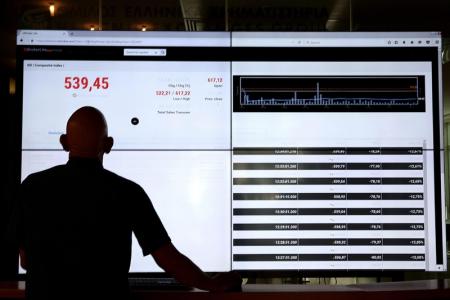Path, destination of interest rates more important than timing of first cut: UBS
2024.06.29 05:31

Since the start of 2024, investors have been mainly fixated on when the Federal Reserve will begin cutting rates.
Initially, March seemed like a probable time to do it, but expectations then shifted to June after an unfavorable spate of economic data. Now, for those same reasons, the first cut may not occur until December, if at all this year, though economists at UBS still anticipate a cut in September.
However, the investment outlook actually hinges less on when the Federal Reserve will begin cutting rates and more on the path and destination thereafter, analysts at UBS said.
Analysts pointed out that the rose almost 15% year-to-date despite market pricing for cuts in 2024 dropping from nearly seven to below two now.
“What has mattered is that economic growth and earnings have been better than expected,” they explained. “Whether the first cut is in September or December likely won’t make any material difference for either over the next year.”
“Consequently, expect the debate over the pace, magnitude, and terminal level for rate cuts to be front and center this summer, a point made in our second-half outlook,” analysts added.
This reflects the consensus view for macro conditions in the rest of 2024, with most investors expecting moderate GDP growth and inflation, low recession risk, and a realistic range of zero to two rate cuts. However, the range of possible outcomes for growth, inflation, fiscal policy, and Fed rate cuts is much wider for 2025 and beyond, analysts remarked.
When focusing on the rate path, in particular, the debate is relevant for the investment outlook for three main reasons, the note states.
Firstly, fluctuations in the 10-year Treasury yield have closely mirrored changes in market expectations for the neutral federal funds rate, suggesting that shifts in anticipated Fed rate cuts could similarly impact the 10-year yield.
Secondly, the debate over the neutral federal funds rate (r*) and how restrictive current monetary policy is remains critical. Opinions vary significantly, with some arguing that the policy is not very restrictive and others maintaining that the neutral rate is around 3%.
“The resilience of the US economy favors the former view for now, but a rapid growth deceleration could tip it toward the latter,” analysts wrote.
Lastly, the lack of a clear framework from the Fed regarding the rate-cutting path is a source of potential market volatility.
While the Fed’s “dot plot” suggests a steady pace of cuts until the funds rate reaches 3-3.25% by December 2026, it remains uncertain how the Fed will respond to deviations from its growth and inflation forecasts.
As economic conditions evolve, large oscillations in rate cut expectations are likely, potentially contributing to market volatility.








